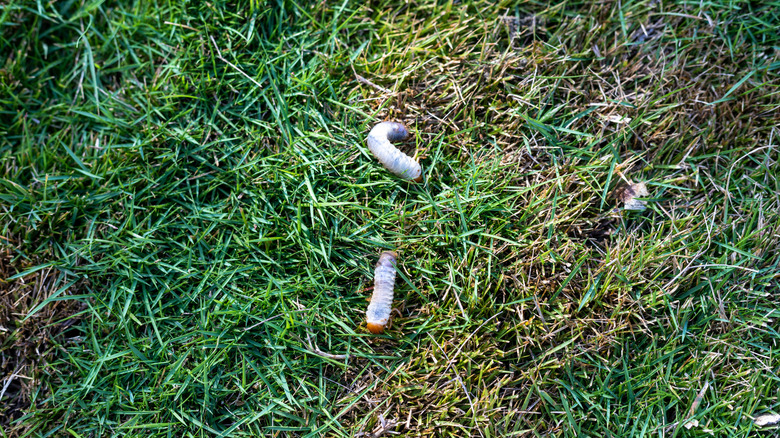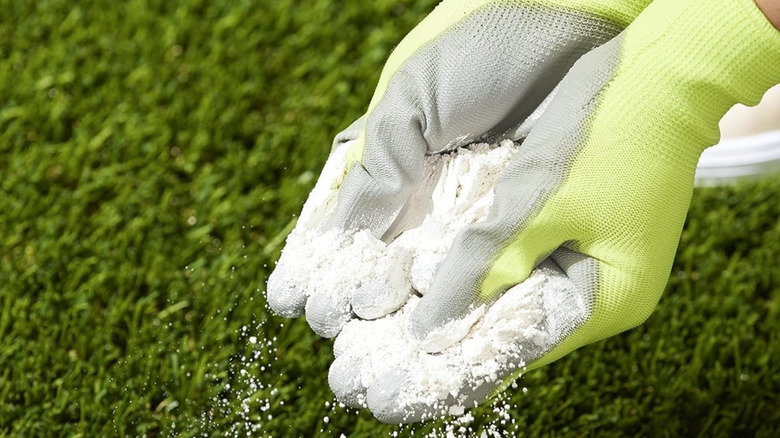The Surprising Addition You Can Use To Keep Grubs Out Of Your Lawn
We may receive a commission on purchases made from links.
One second your grass is looking vibrant and lush and the next it has brown patches or entire sections are dying off. You may think these problems have something to do with the amount of water you're giving your grass or sunlight its receiving, but it might actually be caused by pesky beetles. Japanese beetles — or, more aptly, their offspring — are notorious for burrowing into lawns; the grubs eat healthy grass roots. Treating your lawn with harsh pesticides or trying to keep Japanese beetles out of your garden with unexpected kitchen staples, doesn't always work well. Luckily, there is a bacterium that specifically targets this beetle's larvae and (eventually) ensures the adults don't come back to torment your lawn next summer. It's called milky spore.
Unlike traps, which are more likely to increase rather than reduce the number of Japanese beetles in your yard, milky spore is effective and long-lasting. Dump a load of milky spore powder on your lawn and the larvae will ingest it as they feed on the grass roots. Once infected with the bacterium, they quickly die off, releasing more spores into the soil in the process. Over time, this creates a natural defense mechanism against Japanese beetles that can last for up to a decade. It helps reduce beetle predation in your garden beds, too. If your goal is to grow a healthy lawn without harsh chemicals, this is one simple product to add to your gardening arsenal. A 10 ounce bag of St. Gabriel Organics Milky Spore Japanese Beetle Killer costs around $30 or ask for it at your local garden supply store.
How to use milky spore and does it work?
The first step in the milky spore powder application process is knowing if there are grubs in the grass. Look for brown patches and increased bird activity. The ideal window for milky spore application is typically late summer to early fall, when grubs are feeding near the surface of the lawn, making them most vulnerable to the spores. Spread the powder evenly across your grass using gloved hands, a spoon, or a garden dispenser. For a large lawn, use a drop spreader. Water the lawn thoroughly to help the powder sink down to where the grubs live and feed. This isn't an overnight cure; patience is essential. Milky spore works gradually, with infected grubs building in number over a few season or 3 to 5 years. In other words, it may take a few life cycles for the powder to effectively reduce the number of Japanese beetles in your yard.
This long wait may have you questioning whether milky spore actually works. The answer is mostly yes, but there are a few caveats worth noting. It's only effective against Japanese beetles, as the bacterium specifically targets that species. If you're dealing with other types of grubs, it simply won't work on them. Additionally, the grubs need to actually ingest the spores, not just wiggle through the powder. That's why it is extremely important to evenly disperse the milky spore powder and not skip the watering in stage. Soil temperatures consistently above 60 to 70 degrees Farenheit may also limit the effectiveness of the spores.

